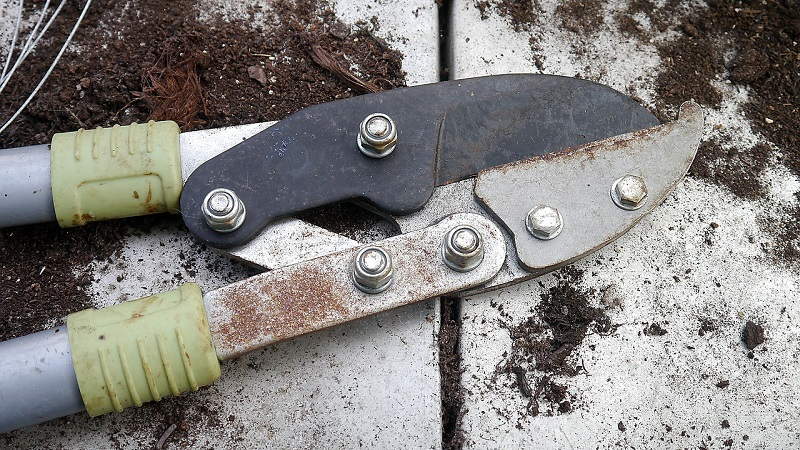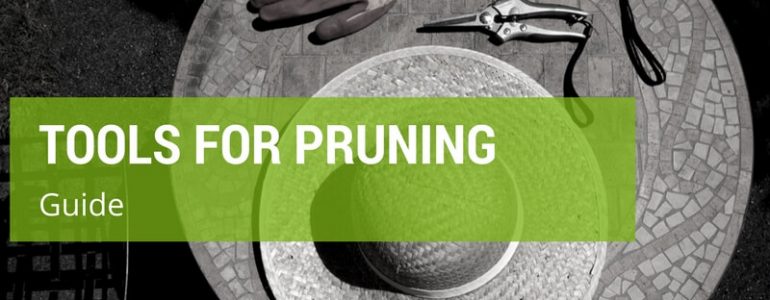Pruning is one of the most important gardening and lawn care jobs. Skilled pruning keeps your plants attractive, encourages blossoming and new growth and helps prevent the development of disease. Good tools make your pruning tasks easier and more effective, so it’s well worth it to choose your pruners carefully and take good care of them.
In this article, I will explain the uses of different types of pruners and provide good tips to help you choose the right tools for pruning to suit your needs and your purposes. Read on to learn more.
Different Types of Pruners Serve Different Purposes

Pruning tools are used to shape and trim all manner of plants. You need a sharp pruner to deadhead your blooming plants and to remove damaged, dead or diseased foliage. You’ll find yourself reaching for your pruners more often than any of your other tools, so smart purchases really pay off in the long run.
Putting together a well-rounded collection of loppers, clippers, shears, secateurs and pruning saws will keep you ready to tackle a great number of gardening tasks.
As you collect specific tools for specific jobs, keep in mind that one size does not fit all. The pruners that work best for you will be those that are well matched with the size, shape and strength of your hands. Value is also an important consideration. In general, when buying tools it pays to invest in quality.
Considerations When Choosing The Best Pruners For You
1. Availability of replacement parts: High quality tools can be repaired thus extending their life and saving you money in the long run.
2. Ergonomic design: Well designed tools feel comfortable in the hand and help you avoid repetitive use injuries.
3. High quality steel blades: Solid, tempered steel resists rust and can be effectively sharpened.
4. Locking blades: An effective locking mechanism prevents damage to the tool and injury to you.
5. Strong recoil spring: Pruning shears should have a strong spring between the handles to reduce your workload. Without this, you have to use your pruners like scissors pushing the blades together and pulling them apart.
6. Simple to take apart: Easy disassembly allows you to replace damaged parts, sharpen blades easily and get your pruning tools completely clean.
7. Proper sizing: Choose the right size tool for the job. Attempting to use a tool that is too large or too small can result in fatigue, tool damage and clumsy, messy completion of the job. Pruning tools are great for plants and branches up to 5cm – you need different tools if you want to cut something larger.
How to Select Pruning Tools
This video outlines the best tools for different pruning jobs.
Pruning Tool Terms & Definitions
1. Secateurs: There are two types of secateur blades, bypass and anvil. Both are short-handled tools.
- Bypass secateur blades work like scissor blades. The two sharp blades cross to provide a clean cut. These are excellent for cutting smaller, soft stems that are about pencil-sized in diameter.
- Anvil secateurs consist of one sharp blade and one thick, flat blade. This flat blade is the anvil. When you prune with these blades, you get both cutting action and crushing action. Anvil secateurs are best suited to cutting hard, woody stems.
2. Long-Reach Pruner: This device is like a secateur affixed to a long pole, which allows you to cut branches that are high up in trees and bushes. To operate the secateur, you would pull a lever or a rope. You can usually cut branches as large as three centimeters in diameter.
4. Loppers: These long-handled pruners are designed for two-handed operation. The length of the handles allows you to reach into big bushes and access areas that would otherwise be out of reach. Some models even have handles that can be extended for greater reach. Loppers are good for cutting hard, woody stems as thick as three centimeters in diameter.
5. Hand Shears: These garden hand (or hedge) pruners have short handles and long blades for clipping and shaping box edging, hedges and topiary. They are designed for two-handed operation and can cut through softer stems up to pencil thickness. Some models have telescoping handles that extend your reach.
6. Topiary Shears: These specially designed shears are made for carefully trimming and shaping smaller shrubs and plants. They can be operated with one hand. You may also hear this tool referred to as “sheep shears”.
7. Pruning Saw: There are many different sizes of pruning saws. The largest can be used to cut branches as large as five centimeters in diameter. In addition to variety in blade sizes, saw teeth vary in coarseness and size. Some pruning saws cut only on the pull stroke: others cut both on the push and the pull.
Good Technique Helps Any Tool Work Better!
This video provides sound information on pruning technique. I have also prepared specific guides for pruning cherry trees, climbing roses and soft fruit.
Take Good Care of Your Tools
Purchasing a high quality pruning tool will only deliver greater value if you take good care of your tools. When your tools are sharp and clean, they are easier to work with and do a better job. Dull, dirty blades will tear your plants and may spread disease from plant-to-plant. Remember to clean your blades after every use and sharpen them before safely storing them away for winter.
How to Clean Garden Tools and Pruning Shears
This video provides good information on garden tool care.

![Best Secateurs [Buying Guide + Reviews] Best Secateurs [Buying Guide + Reviews]](https://www.gardendad.co.uk/wp-content/uploads/2018/01/best-secateurs-reviews-70x70.jpg)





